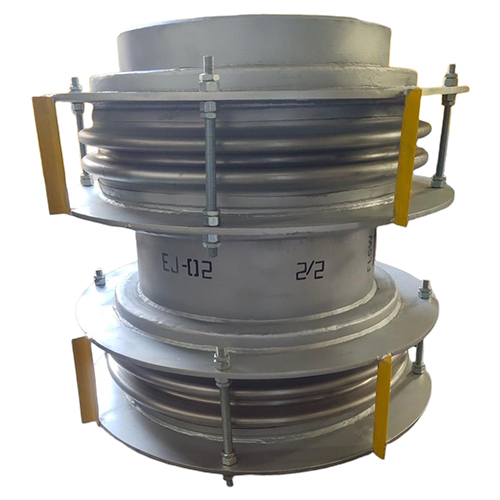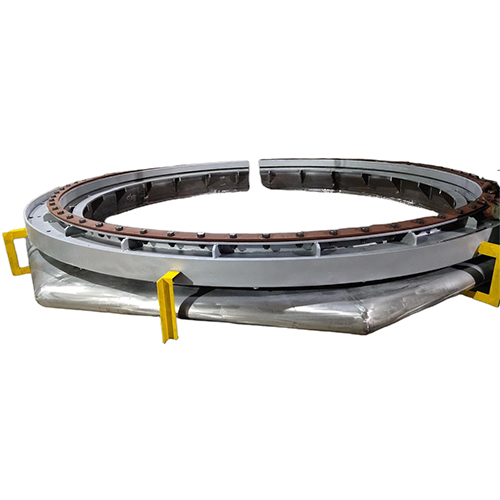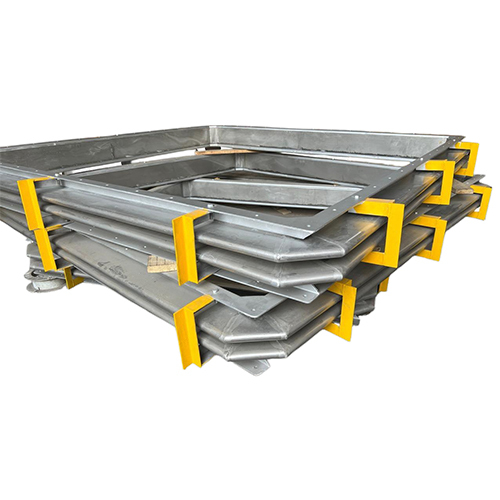Metallic Expansion Joints
Product Details:
- Product Type Metallic Expansion joint
- Height As per requirement Millimeter (mm)
- Head Code Round
- Size 25NB to 5000NB
- Media Air, Steam, Water, Oil, Gas, Acid
- Weight 125 Kilograms (kg)
- Color silver
- Click to View more
Metallic Expansion Joints Price And Quantity
- 20000 INR/Unit
- 1 Unit
- 20000.00 - 200000.00 INR/Unit
Metallic Expansion Joints Product Specifications
- Air, Steam, Water, Oil, Gas, Acid
- 25NB to 5000NB
- Round
- Metallic Expansion joint
- As per requirement Millimeter (mm)
- Others
- 1 kgf/cm2
- silver
- Other
- 125 Kilograms (kg)
- Others
- Industrial Plants
- 500 Celsius (oC)
- Millimeter (mm)
- Stainless Steel
- Painted
- Others
Metallic Expansion Joints Trade Information
- Vadodara, Gujarat
- 10 Unit Per Week
- 1 Week
- Contact us for information regarding our sample policy
- Truck Load
- Asia, Australia, Central America, North America, South America, Eastern Europe, Western Europe, Middle East, Africa
- All India, South India, Central India, West India, North India, East India, Gujarat, Karnataka, Kerala, Lakshadweep, Mizoram, Meghalaya, Manipur, Andhra Pradesh, Bihar, Chandigarh, Daman and Diu, Goa, Jharkhand, Odisha, Punjab, Assam, Delhi, Dadra and Nagar Haveli, Andaman and Nicobar Islands, Arunachal Pradesh, Chhattisgarh, Haryana, Himachal Pradesh, Jammu and Kashmir, Madhya Pradesh, Maharashtra, Nagaland, Rajasthan, Sikkim, Tamil Nadu, Telangana, Tripura, Pondicherry, Uttar Pradesh, Uttarakhand, West Bengal
- ISO 9001 : 2015
Product Description
Metallic Expansion Joints are flexible connectors designed to absorb thermal expansion, contraction, vibration, and misalignment in piping systems or ductwork. They use metal bellows as the primary flexible element and are widely used in high-pressure and high-temperature applications like power plants, refineries, chemical plants, and HVAC systems.
What Are Metallic Expansion Joints Made Of?
A typical metallic expansion joint contains:
-
Metallic Bellows Element
-
Made of stainless steel or other alloys (e.g., Inconel, Monel, Hastelloy) for corrosion and temperature resistance.
-
Corrugated design provides flexibility for axial, lateral, and angular movements.
-
-
End Connections
-
Weld Ends or Flanges for integration into the pipeline or equipment.
-
-
Optional Internal Components
-
Inner Sleeve (Flow Liner): Protects bellows from erosion, turbulence, and high-velocity media.
-
Outer Cover (Shroud): Provides mechanical protection and shields against environmental damage.
-
-
Optional Restraints & Hardware
-
Tie Rods: Control pressure thrust and limit movement.
-
Hinges or Gimbals: Enable angular movements while absorbing pressure thrust.
-
Limit Rods: Prevent over-extension or compression.
-
Functions of Metallic Expansion Joints
-
Absorb thermal expansion and contraction of piping.
-
Isolate vibration and noise from rotating machinery.
-
Compensate for minor misalignment.
-
Reduce load on anchors and equipment.
Types of Metallic Expansion Joints
-
Single Axial Expansion Joint Absorbs axial movement only.
-
Universal Expansion Joint Two bellows connected by a spool for large lateral movement.
-
Hinged Expansion Joint Absorbs angular rotation in a single plane.
-
Gimbal Expansion Joint Handles angular rotation in multiple planes.
-
Pressure Balanced Expansion Joint Compensates for axial/lateral movement while neutralizing pressure thrust.
Advantages
-
High strength and durability under pressure and temperature extremes.
-
Suitable for steam, gas, oil, and chemical pipelines.
-
Longer service life compared to rubber or fabric joints.

Price:
- 50
- 100
- 200
- 250
- 500
- 1000+









 Send Inquiry
Send Inquiry Send SMS
Send SMS English
English Spanish
Spanish French
French German
German Italian
Italian Chinese (Simplified)
Chinese (Simplified) Japanese
Japanese Korean
Korean Arabic
Arabic Portuguese
Portuguese